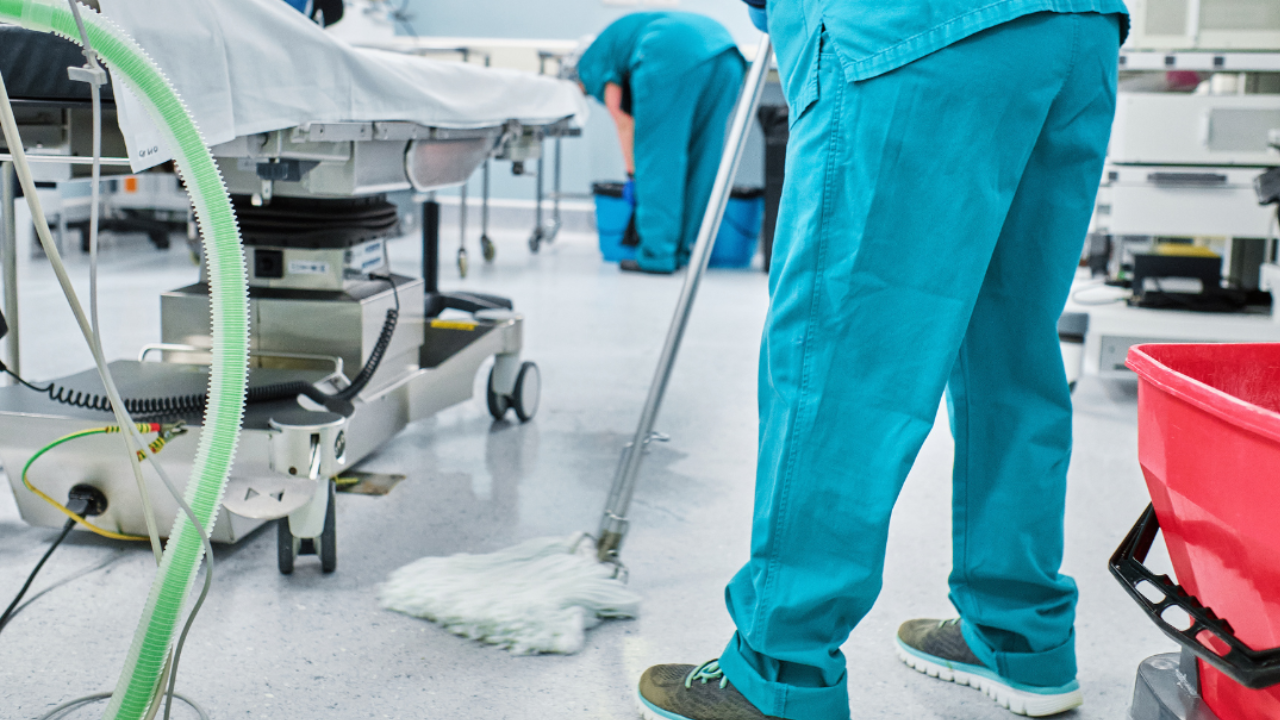Blog detail

November 14, 2024
by Nanzpharma
The Link Between Clean Surfaces and Patient Safety
In healthcare facilities, maintaining a high standard of cleanliness is not just about aesthetics, it’s a fundamental requirement for patient safety. Regular cleaning and disinfection of surfaces reduce the risk of infections, ensuring a safe environment for patients, staff, and visitors alike. From patient rooms to high-traffic areas, rigorous cleaning protocols are essential to prevent the spread of germs. By focusing on the impact of clean surfaces, healthcare facilities can enhance patient outcomes and foster a culture of health and safety.
The Risk Posed by High-Touch Surfaces
High-touch surfaces, such as bed rails, door handles, and medical equipment, are areas of constant use and, therefore, major sources of potential contamination. These surfaces can harbour pathogens that are easily transferred through frequent contact, posing a risk to everyone within the facility. Consistent disinfection of high-touch areas minimises the spread of germs and demonstrates a proactive approach to infection control. This practice is especially critical in busy areas, reinforcing the facility’s commitment to patient and staff safety.
Why Routine Disinfection Matters
A scheduled cleaning routine plays an invaluable role in maintaining hygiene across healthcare settings. Regular disinfection of surfaces ensures that bacteria and viruses do not have the opportunity to build up over time. This is particularly important in areas where people congregate or wait, as these spaces can easily become sources of contamination. Routine cleaning fosters an environment that limits infection risks, providing peace of mind to patients and reducing health risks in high-traffic areas.
Empowering Staff with Proper Training
Effective cleaning relies not only on the right products but also on the knowledge and skills of the staff implementing these practices. Training staff in proper disinfection techniques ensures that they are equipped to handle cleaning tasks effectively. This includes understanding the appropriate dwell times for disinfectants and the best practices for thorough application. With regular training, staff are better prepared to maintain strict hygiene standards, resulting in a safer environment for everyone involved.
The Connection Between Cleanliness and Recovery
Cleanliness is a critical factor that can directly impact a patient’s recovery experience. Patients recovering from illness or surgery are often more susceptible to infections, making a sanitary environment crucial for their well-being. By keeping surfaces clean, healthcare facilities can help patients feel comfortable and safe, contributing to faster recovery times and better overall experiences. A clean space reflects the facility’s dedication to prioritising health and healing.
Fostering a Culture of Hygiene and Accountability
Instilling a culture that values hygiene begins with a shared responsibility for maintaining cleanliness. This commitment to high standards of cleanliness, when embraced by all staff: from medical professionals to support teams, creates a collaborative environment where safety is a priority. When cleanliness becomes second nature, it not only benefits patient care but also boosts the confidence of everyone who works or visits the facility, reinforcing trust in the facility’s standards.
Strengthening Safety Through Cleanliness
In healthcare, clean surfaces are integral to a safer environment and reflect a facility’s commitment to quality care. By upholding stringent disinfection practices, healthcare teams work to protect patients, visitors, and staff. Nanz Med Science supports this commitment by offering advanced disinfectant solutions tailored to healthcare needs, ensuring that facilities can consistently meet the highest standards of cleanliness. A focus on cleanliness builds a foundation of trust, safety, and better health outcomes, embodying the values of patient-focused care.

